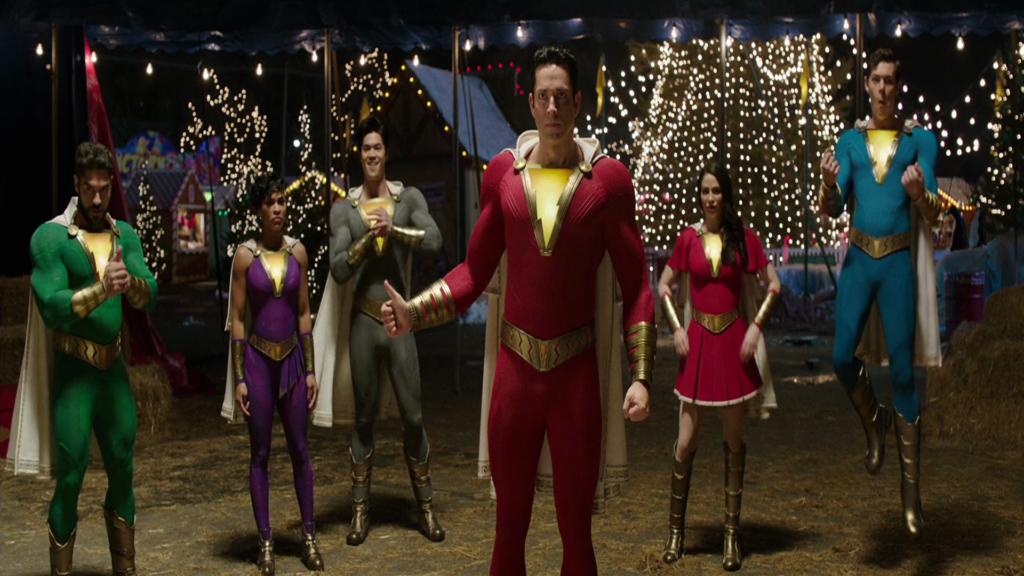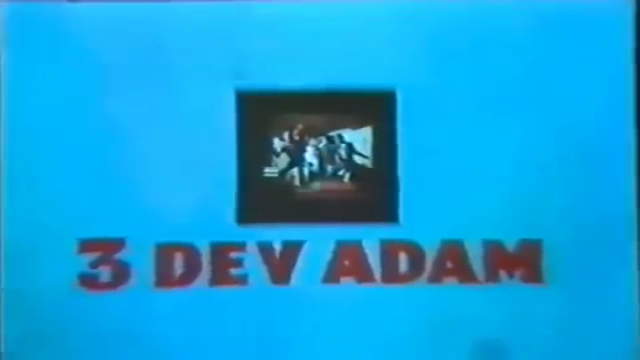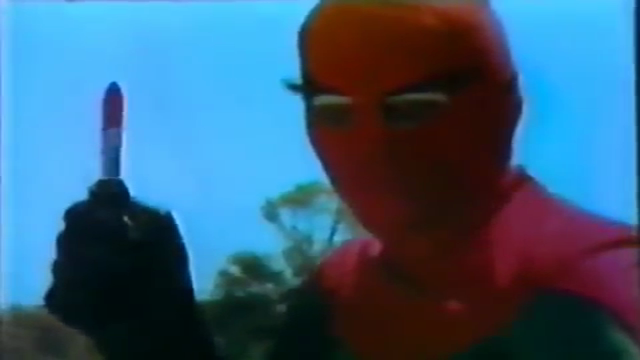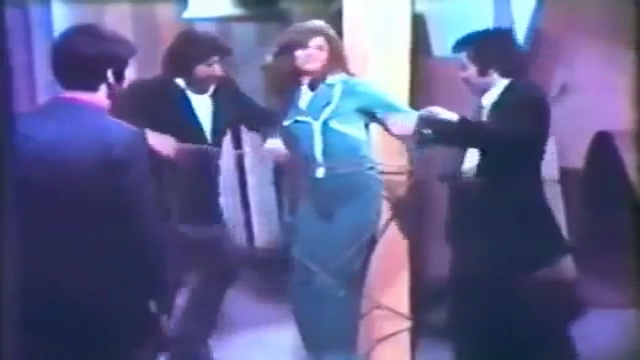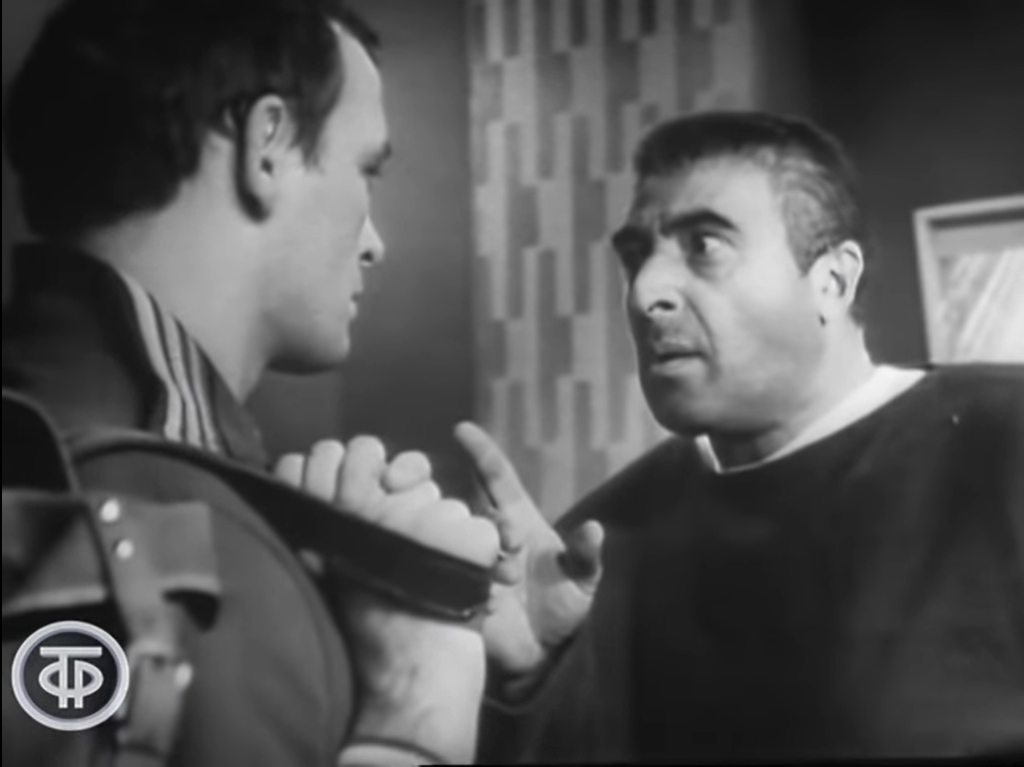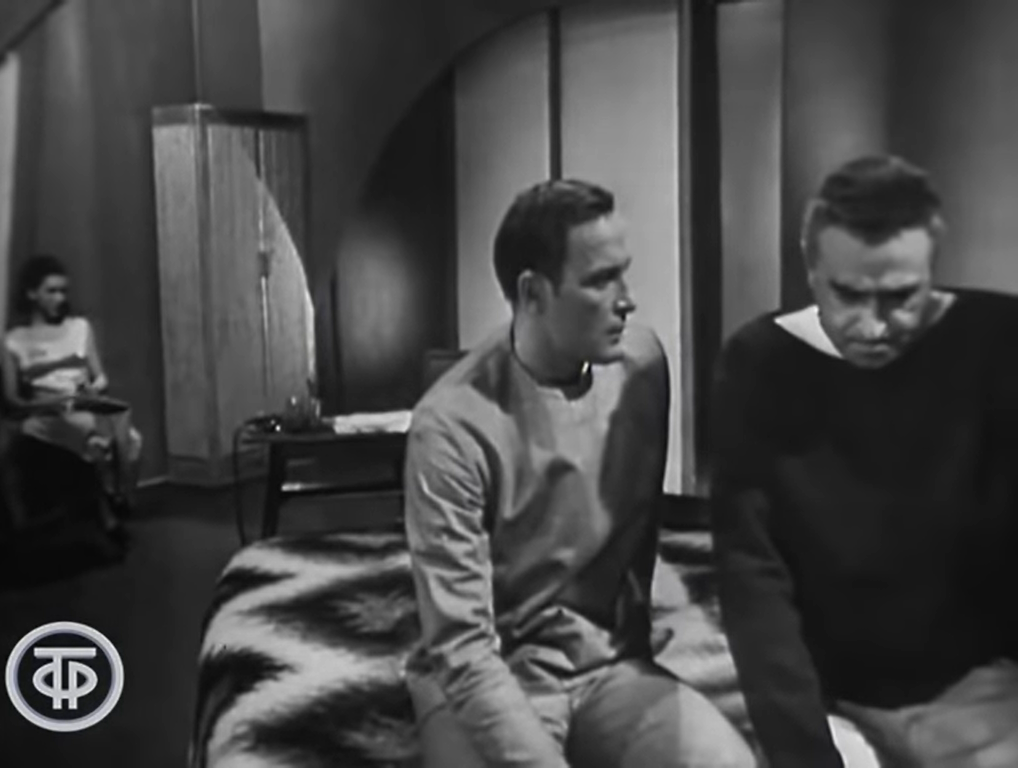-
#366 – Pulgasari (1985)
Pulgasari (1985)
Film review #366
Director: Shin-Sang-Ok
SYNOPSIS: A small village is by invaders who try to force the blacksmith to make weapons for them. When he refuses, he is sent to prison without food until he changes his mind. In his dying moments, he creates a small figure that he vows will destroy the invaders. When the figure comes alive in front of Ami, the blacksmith’s daughter, she realises the creature grows bigger with the more iron it eats, and the villagers begin feeding the creature their iron in order to fight the imperial invaders…
THOUGHTS/ANALYSIS: Pulgasari is a 1985 monster film and the first film I have reviewed from North Korea. The story behind the film is just as interesting as the film itself. The director, Shin Sang-ok, was kidnapped with his wife by North Korea for the intention of producing films such as Pulgasari for the government. Kim Jong-il, the leader of North Korea, was apparently a huge fan of the Godzilla films, and wanted to create his own version, thus why he is listed as the executive producer on this film. For around ten years Shin Sang-ok and his wife (an actress in her own right) were forced to make films for the government before eventually escaping when they were visiting a film festival in Austria and fleeing their North Korean minders. Pulgasari was the last film he directed before he made this escape.This whole story would probably make an interesting film in and of itself…
With regards to Pulgasari itself, the film opens up in a remote village in the past. A young man named Inde wants to leave the village to join a group of rebels/bandits living in the mountains, but Ami, a woman in the village who he is due to wed, does not want him to go. This drama is interrupted as an army enters the town to commission the blacksmith, Ami’s Father, to create weapons for their army. They take all of the iron items from the villagers to use in creating these weapons, which leads the blacksmith to refuse to help them. They respond by locking him up without food until he changes his mind. Just before he dies of starvation, the blacksmith creates a small figurine of the mythical monster Pulgasari which he puts his soul into, with the aim of protecting the village. When Ami gets the figure, she accidentally drips some of her blood onto it and causes it to come alive and start eating anything made of iron. As Pulgasari grows with everything he eats, the villagers and the rebels in the mountains rally behind the indestructible Pulgasari to drive away the invaders. The story as a whole is fairly simple, with a number of battles between the villagers and the imperial army, with a number of schemes by the King to stop Pulgasari as he relentlessly advances towards him. I suppose it doesn’t need to be much more complicated than a giant monster smashing stuff, and in that respect the film does its job fairly well. Some of the scenes centred around the other characters can dragon a little too long, and there are large gaps in between when Pulgasari makes an appearance which become rather dull. Nevertheless, Ami is a decent (and rare) female lead, and the setting is fairly well established.
The film is set in the past, and feels like it relies a lot on the history of Korea during that era. The villains are clearly meant to be Japanese, which is a typical portrayal of the country given it’s past in occupying Korea, and North Korea’s particular resentment of them. As you might expect, the film not so subtly fulfils the propaganda of the North Korean narrative, with the common workers banding together to overthrow the invading, imperial rule. In the end, Pulgasari becomes too big and continues to eat all the iron even after the invaders are gone. This leads to Ami sacrificing herself to stop Pulgasari. This is perhaps a reference to the revolution in North Korea leading to the creation of a monster that will bring about their destruction was a slight dig by the captive director at the regime that was holding him hostage, but it’s difficult to say for sure.
I was expecting a rather barebones film out of North Korea, and it more or less met those expectations. The production values and special effects aren’t much improved on the Godzilla films made thirty years prior. Nevertheless, just as those films still hold up well, some of the scenes in this film look fairly decent, particularly watching Pulgasari destroying buildings. The battle scenes as well feature a host of extras to give the feel of armies clashing. Some of the effects though, are pretty bad, such as when Pulgasari is small, you can clearly tell it is a hand puppet. The body suit of Pulgasari is again pretty decent, and has some moving parts and facial animations to make it more convincing. The soundtrack consists of a single synthesiser being played in more dramatic scenes, and is barely worth mentioning, but overall the film ended up being more well made than I was expecting. Pulgasari doesn’t offer anything new or exciting to the genre, and it loses some of it’s significance outside of it’s home country, but it is a rare and interesting example of cinema from a place you wouldn’t normally see.
-
#365 – Shazam! (2019)
Shazam! (2019)
Film review #365
Director: David F. Sandberg
SYNOPSIS: Billy Batson is a foster child who is constantly running away and trying to find his real mum. When Thaddeus Sivana enters a hidden realm looking to take a Wizard’s ancient powers for himself, and steals the powers of the seven deadly sins to unleash them on Earth, the wizard summons Billy to be his champion and take his powers to stop Sivana from unleashing hell on Earth.
THOUGHTS/ANALYSIS: Shazam! is a 2019 superhero film based on the comic book character, and is also part of the DC cinematic universe of films. The film starts off showing a young boy named Thaddeus Sivana, who is transported to the Rocky of Eternity, a sacred temple where he is tested by a wizard to see if he is worthy of inheriting his magic powers. Sivana fails to be pure of heart, and is sent away. In the present day, Sivana is still desperately trying to return to that temple, and take the powers for his own. We are also introduced to Billy Batson, a fourteen-year old boy who is constantly running away from foster homes as he tries to find his Mother. He is moved to a new foster home where he is introduced to Freddy Freeman, another foster child. When Billy intervenes to stop some bullies attacking Freddy, he escapes on the subway, where he is transported to the Rock of Eternity. There, Billy learns that Sivana has unleashed the seven deadly sins, and Billy is the last hope to stop them. The wizard transfers his powers to Billy, and tells him he can access them by uttering his name: Shazam. The film’s premise is pretty simple: it’s a classic clash of good vs. evil, with some human drama in between. There’s a good balance of these different elements, and everything feels like it adds something to the plot.
With Billy able to transform into Shazam, he has to learn how to use his new powers, as well as to work out what those powers actually are. He and Freddy try and test out a number of powers, and we get a sense of Shazam being an incredibly versatile hero, but ultimately he still has the naivety and worldview of a fourteen year old boy. Shazam has many of the abilities (and appearance) of superman, but has none of the maturity or legacy that Superman has, and is thrust into this state with no information or warning. Billy has to work out what he is supposed to do with these powers and what their possibilities are, and a good chunk of the film is spent exploring this. The film goes through some fairly predictable scenarios that while not wholly original, are still lots of fun, and deliver a light-hearted entertainment with some good laughs. It does a similar thing to the well remembered film Big, and includes a sly reference to it in one scene, which again is pretty fun. Shazam! really harks back to the classic comic book heroes: the battle of good versus evil without being too concerned about building complex and conflicted characters. However, this type of superhero doesn’t really fit in to what we recognise in contemporary comic book heroes, and so Billy’s naivety and sense of being lost (reflected in his own personal story with regards to finding his mother) is in line with this and keeps a consistent tone throughout. There’s also the issue of Billy’s alter ego having no real superhero name, but that’s more of an awkward reference that his name is technically Captain Marvel and Marvel Comics now owns that trademark for their own Captain Marvel, and so there’s always been this issue around his name (typically he is just referred to as Shazam). Overall though, the focus is on a light-hearted, fun superhero film that keeps things simple and humourous, while trying to find a place for this kind of superhero in a world that has somewhat moved on from this conception of them (especially in the DC comics universe).
Shazam! is primarily based on the 2011-2012 comic reboot of the character, and it seems to follow it pretty closely, with the setting and characters being fairly similar to those in the comics. There is however, some other callbacks to the larger legacy, including the ambiguity surrounding Shazam’s name. The black and white movie serial based on the character is one of my favourite of the superhero serials of the time, and while the two characters are rather different, that transformation of Billy into Shazam/Captain Marvel is still the same, with the cool image of the bolt of lightning striking him, and Shazam emerging from a cloud of smoke. The acting partnership of Billy/Shazam is great, and their transformation really gives the impression that they are the same person, just with a different body (compared to the movie serial, where they were portrayed as different people). The supporting cast also do a good job and add some variety, but given that the end of the film does dedicate a decent amount of time to these characters, I feel like they weren’t set up completely to justify the time spent on them at the climax.
As much as I did enjoy this film, there are some glaring problems. Firstly, as mentioned, this is a classic good vs. evil film, and as such the villain doesn’t stand out too much. He exists mostly as a character for Billy/Shazam to test his limits against and to see his own place in the world. Another problem is that the resolution at the end of the film just isn’t set up very well: when Billy finds his biological mother and he realises that she intentionally abandoned him, he suddenly decides that the foster home is now his “real family”, but the film does no work in facilitating this u-turn. There’s plenty of development between Billy and Freddy (although this is undone constantly by Freddy’s interventions telling Billy what a superhero should be, rather than Billy’s childish stunts), but none between Billy and the foster family as a whole, and we never see him settling into this new home or changing his attitude to anyone there. The film really only needed a scene or two to show Billy’s changing attitude, but as it stands the change just seems to come from nowhere. The last major problem is that the finale sees Billy giving his fellow foster kids the same powers he has, and they work as a family to defeat the “family” of the seven deadly sins. This actually is in keeping with the comic book, but it does come out of nowhere, again due to the whole foster family story being underdeveloped. On top of this, it does dilute the final fight by splitting the action between Shazam and everyone else, thus we never get to see Billy’s triumph and rewarding moment of glory as it’s shared with these other characters that show up and share the spotlight. I think all of these problems don’t really hamper the enjoyability of the film, and could have easily been addressed with a tighter script and the addition of a few scenes.
The light-hearted and humourous angle of Shazam! lends itself to being more a family-oriented film, and it revels in a bright colour palette and expressive acting and visuals compared to the dark and austere palette often associated with films based on DC comics. The film was directed by David F. Sandberg, who directed the 2015 short film Kung Fury, and that same style is definitely on show again here. However, there’s some use of adult language, and the demons embodying the seven sins are pretty gruesome looking. Also the scene with the demons in the boardroom meeting I imagine would be pretty disturbing for kids, even though there’s no gore involved. Overall, Shazam! is a fun adventure with plenty of laughs and action. It harks back to the classic conception of a superhero, as well as thinking about where such conceptions belong in contemporary settings, where the dividing lines of good versus evil are not so neatly drawn. While it sometimes does not offer much new, it still executes it in a colourful, fun way that will be entertaining so you won’t care that much. There are some elements of the story that are underdeveloped and thus dilute some of the payoffs at the end of the film, but these don’t stop the film being entertaining and worthwhile viewing.
-
#364 – 3 Giant Men (1973)
3 Giant Men (1973)
Film review #364
Director: T. Fikret Uçak
SYNOPSIS: A smuggling gang led by Spider-man is stealing precious artefacts in Turkey and selling them for huge profits in the U.S. The Turkish authorities call in Captain America and Mexican wrestler Santo in order to defeat Spider-man and stop the smuggling ring.
THOUGHTS/ANALYSIS: 3 Giant Men (3 Dev Adam) is a 1973 Turkish superhero film. The film centres around Captain America and Mexican wrestler Santo trying to stop a smuggling ring headed by Spider-man (or “the Spider” as he is called in the film). It may strike you from this summary that this is a completely bizarre concept for a film, and makes very little sense considering the characters themselves, but we’ll get on to that later. First, the story begins with a woman being caught by Spider-man’s gang and being killed by having a boat’s propeller reversed into her face (offscreen anyway, signified by the spraying of what looks like tomato ketchup onto the legs of a witness). With this smuggling gang stealing and killing all over the place, the Turkish authorities call in Captain America and Mexican wrestler Santo in order to stop the gang. The story unfolds without any surprising or complex elements; the premise is laid out at the beginning and it’s followed through until the end without interruption. The story reminds me of classic movie serials, which consisted in a lot of this constant back and forth of fight scenes, car chases, and investigating.
Okay let’s talk about the characters: first, Turkish cinema around this time is infamous for using characters and footage from other properties without permission, and I’m pretty sure this is another example of that. When the police chief first meets Captain America, he remarks how good his Turkish is for an American…except it is plain to see that he is not American, he is played by a Turkish actor, who consequentially does not resemble Captain America in any way. I wonder how much Turkish audiences in 1973 would be familiar with American superheroes, and since it is probably very little, I suppose they could get away with just doing whatever they wanted with the characters. The Mexican wrestler Santo is an original character for the film, and puts on his wrestler mask and cape whenever he needs to fight some bad guys. At one point he is seen wearing a native American jacket, which is a bit odd if he is Mexican, and I wonder if the filmmakers were just conflating the two out of laziness and/or ignorance. Spider-man being the villain is probably the oddest character of the film, as he is one of the most innocent and naive of any superhero. Here, however, he is portrayed as a ruthless murder, who stabs multiple people, tortures them and at one point sends some rats down a ridiculous contraption to eat someone’s eyes out. Perhaps the most bizarre part of his character is when Captain America is explaining that Spider-man cannot stand people who dress up in costumes (such as Captain America), and he will automatically attack them on sight. How does that work? Is he jealous that his ill-fitting suit is upstaged by other costumes? I assume it’s that. Either way, “The Spider” is a ruthless villain with absolutely no connection to the original character, Also his huge eyebrows are a major distraction…
I can’t quite figure out who this film is meant to be for: the superhero characters might make you think it is a more family-oriented, as the original characters would have been, but the all the brutal deaths and torture (even though it is mostly off-screen) is definitely not family viewing. Couple that with the semi-nudity and stripper scenes and you’re definitely looking at a film intended for adults. The film as you might expect is a very low budget affair, with cheap sets, costumes and props being the norm throughout. Again, it reminds me of the classic movie serials, which used a limited amount of sets and props to keep costs low. There are some surprisingly good points though: Captain America’s suit looks pretty well done (in contrast to Spider-man’s green and red suit, which as mentioned does not fit well), and the fight scenes are quite decently choreographed, although clumsily edited in parts. At the end, the fight between Captain America and Spider-man gets incredibly ridiculous, with Captain America killing off Spider-man in a number of silly ways, only for him to reappear around a corner, and the fight carry on somewhere else. I assume they are all body doubles, but with this film it’s hard to tell what logic it subscribes to from one scene to the next. This film is ridiculous: it’s portrayal of it’s characters is completely at odds with the source material, the story is fairly basic, and is filled with odd scenes that make no sense (what was the deal with the puppet scene?). The film also crams in some raunchy scenes and gory violence that makes it feel like the film is just throwing all sorts into the picture without any consideration for a consistent tone. In the end though, you’re never going to take this film that seriously, and it’s worth a watch just to see how bad it is, and you’ll certainly get a laugh out of how cheap and silly it all is.
-
#363 – Solaris (1968)
Solaris (1968)
Film review #363
Directors: Boris Nirenburg, Lidya Ishimbayeva
SYNOPSIS: Dr. Chris Kelvin has arrived on a space station orbiting the planet Solaris. When he arrives, he finds that his colleague is dead, and the two remaining crew are acting strange. Things get even stranger when his wife, who died ten years ago, seemingly appears on the station with no memory of what happened to her. He learns that people important to each of the crew appear to them, and this is somehow connected to the planet Solaris below them. Chris and the other crew must try to determine how these people have come to be on the station, and indeed if they are real…
THOUGHTS/ANALYSIS: Solaris is a 1968 TV film based on the novel of the same name. It is the first adaptation of the book, but the least well known, having been overshadowed by the 1972 Tarkovsky version, generally considered to be a masterpiece of cinema, and to a lesser extent the 2002 version, which saw widespread release. The film opens up with Chris Kelvin, an astronaut and scientist, docking his shuttle with the space station orbiting the planet Solaris. When he arrives, he finds a peculiar set of circumstances, with his old friend and colleague dead having apparently committed suicide, and the two remaining crewmembers being extremely vague as to what is happening on the station. The film’s plot unfolds slowly, with the mystery being slowly unravelled while new complications are constantly added. It is rather similar to the other two films versions, so I will assume it follows the plot of the novel with some accuracy. It’s slow-paced, but it fits the story well, since it gives the viewer space to reflect on the themes that the film is exploring.
Upon finding his wife, who died ten years ago, seemingly alive and well on the station, he realises that each crewmember has had someone personal appear to them. They suspect it has something to do with Solaris attempting to communicate with them, and somehow reaching into each of their subconscious’ and materialising a person within. This is one of the primary themes of the film, and the means of communicating with an entity or being that is completely unlike anything that could be encountered on Earth. It is explained decently, and explored primarily through Chris’ relationship with Harrie, or the facsimile that has been created, which leads to the distinction between the real and fake being increasingly blurred. It doesn’t have the style and depth of the Tarkovsky version, but this no-frills version still gets its message across. A lot of the film does focus on Chris and Harrie, and it seems like a lot of the science-fiction emphasis is sidelined in favour of the film being more of a drama. We never get to see the people ‘created’ for the other crewmembers or get any clue to who they are, so that leaves an odd mystery that will never be solved (in this version anyway). This further reinforces the main relationship between Chris and Harrie, again emphasising their drama more than the larger concepts of the film.
Even though this version doesn’t have the budget or vision of the Tarkovsky version, it still gets the story across well. Instead of elaborate sets and design, we see a rather sparse looking space station which instead emphasises a feeling of isolation, and gives the film a more horror-vibe at times. This is not a bad adaptation by any means: it delivers the story well, explains what’s going on clearly most of the time (there are some points, particularly near the end, that it gets a bit confusing), and explores its themes with a decent depth. However, given the 1972 Tarkovsky version is such a stellar adaptation and work of cinema, there is really not much value in watching this version, as everything in it is done so much better there. Overall, a decent adaptation, but completely eclipsed by its successor.
-
#362 – RoboDoc (2008)
RoboDoc (2008)
Film review #362
Director: Stephen Maddocks
SYNOPSIS: A hospital is being constantly plagued by lawsuits from a greedy ambulance-chasing attorney. With another doctor quitting and the hospital fast running out of money, Dr. Roskin arranges for a new doctor to be sent, but doesn’t expect R.I.P. Healthcare to send a robot doctor, who is seemingly able to carry out medical duties without ever making a mistake. This causes problems for Jake Gorman, the attorney who is making money off all the malpractice cases, and working with Dr. Callaby, another doctor at the hospital who is in league with Gorman, the two try to find a way to stop “RoboDoc” before their money-making scheme is ruined…
THOUGHTS/ANALYSIS: RoboDoc is a 2008 sci-fi comedy film that somewhat parodies the RoboCop films, as the name implies. The film starts out introducing Jake Gorman, an ambulance chasing attorney who has made himself rich by suing doctors for malpractice. His constant lawsuits are pushing the North Mercy (or “No Mercy”) hospital to its limits, with doctors continually quitting and having their lives ruined. The opening of the film consists of a variety of gags and satirical looks at the U.S. healthcare system: from the ambulance-chasing attorneys, the lack of insurance for patients, and the ambulance driver adorning a racesuit, there’s a decent amount of content to get into. RoboDoc was written by two M.D.’s and so obviously they have the necessary experience to write about the setting of the film. I think there was definite potential in the outset to make this film offer a more thorough critique of the healthcare system through a comedic lens, but the film takes it in a completely different route and goes for just another raunchy comedy like so many we’ve seen before. Even in this direction, it needs to push some boundaries in order to be effective, but again it just doesn’t do enough to make it stand out.
After another such incident of a doctor quitting over a lawsuit, Dr. Roskin, the chief of medicine arranges the R.I.P. Healthcare company (who fund the hospital) to send another doctor, which they do, in the form of MD-63, a robotic humanoid doctor who is appointed to the hospital. While Dr. Roskin, a technophile, is reluctant to let a robot do a doctor’s job, he is slowly convinced when he sees that “RoboDoc”, as he is nicknamed, is able to complete any form of care or surgery without mistakes, and thus making him impossible to get sued. This is the core plot of the film, with RoboDoc having to earn the trust of his fellow staff, as well as learn about compassion and the elements of care that go beyond his programming. These are all story elements that have been done to death, and so there are no real surprises here. The character of RoboDoc is also essentially a carbon copy of Data from Star Trek: The Next Generation; right down to the look and voice, which is a recognisable character, but again fails to bring any originality to the RoboDoc role, and doesn’t even satirise it. The actor playing RoboDoc does do a good Data impression though. The character of Attorney Jake Gorman also is well played, and his over-dramatic performances bring some life to the scenes he is in. The rest of the cast are pretty forgettable (apart from the few scenes with the character played by Michael Wimslow from Police Academy), and don’t have much significance in the story. There are the starts of some sub-plots initiated by these characters, but they never really go anywhere, making their roles rather muddled.
RoboDoc is not a high budget film, and has to make do with a fairly limited range of effects. These effects are not particularly convincing, and combined with the uninspiring camera work and wooden acting from some of the actors, you will struggle to take it seriously. There are some positives as I have mentioned, and there are some more obscure references and satirical swipes that are more rewarding than the cheap innuendo jokes. The comedy on the whole does stick mostly to that juvenile, raunchy humour but offers nothing particularly new or memorable. Nevertheless, the film does garner a decent amount of laughs, and so as a comedy film it can’t be said to be a complete failure. RoboDoc is an uninspiring mess for the most part, but there are a few good performances and jokes that make this entertaining enough to watch if you’re not paying too much attention to some of the weaker characters and scattered story that often branches into meaningless dead ends.



















